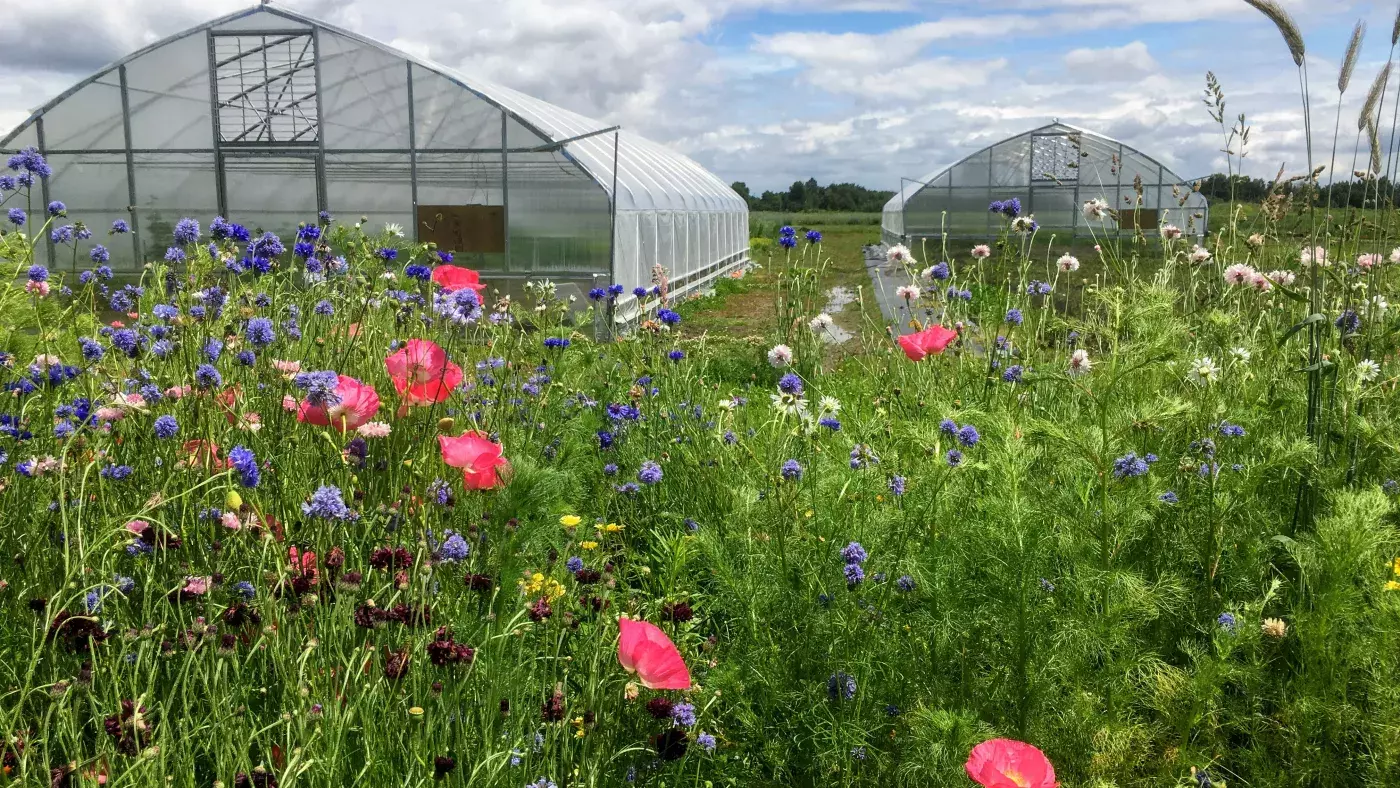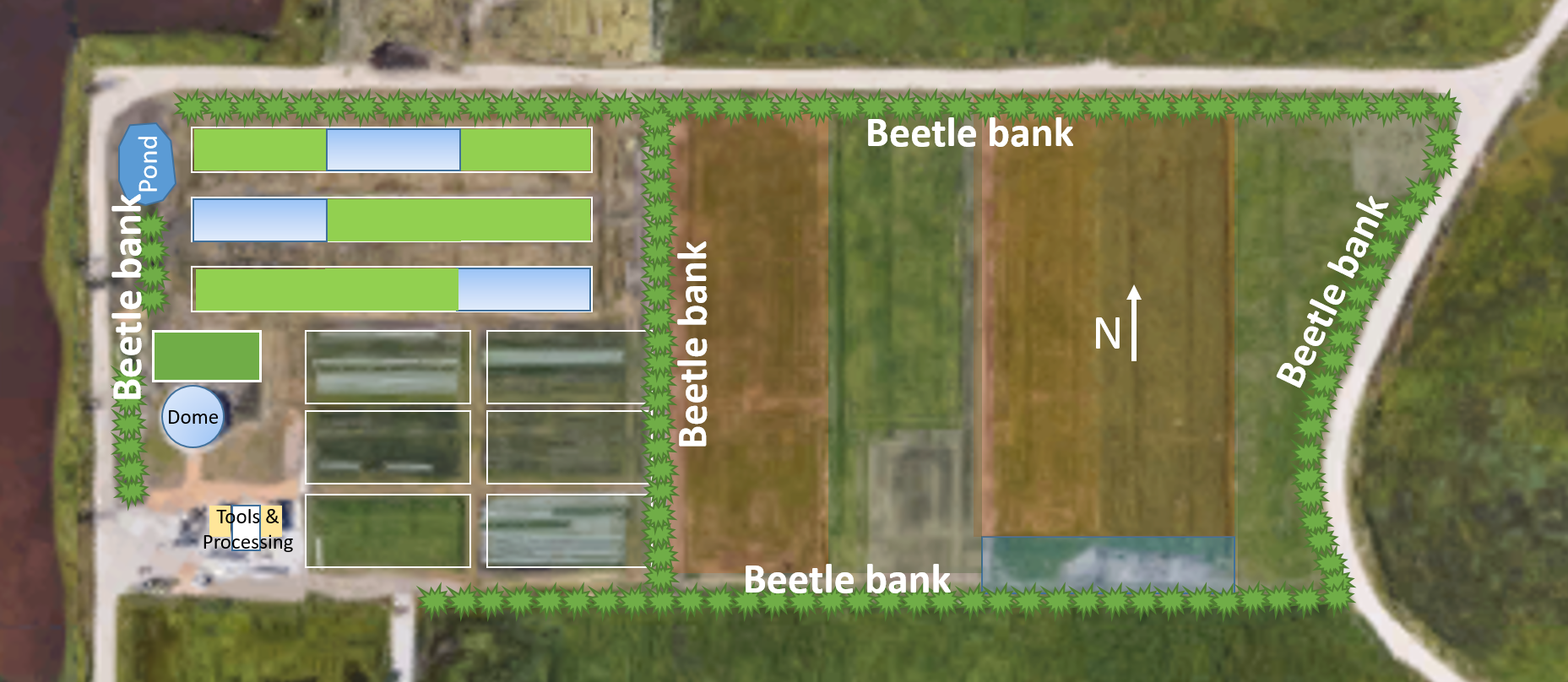

Beetle banks provide habitat for beneficial insects.
Beetle banks
Beetle banks are permanent linear mounds, planted to a mix of perennial grasses and flowering plants, that surround our fields. They provide habitat for beneficial insects, such as predatory beetles and pollinators.

The beetle banks were seeded to a Beetle Bank Blend, developed by West Coast Seeds, that contains the following species:
| Lewis Flax | Linum lewisii |
| Western Blue-Eyed Grass | Sisyrhincium bellum |
| Nodding Wild Onion | Allium cernuum |
| Butterfly Bush | Asclepias tuberosa |
| Farewell to Spring | Clarkia amoena |
| Blanket Flower | Gaillardia pulchella |
| Black Eyed Susan | Rudbeckia hirta |
| Autumn Sneezeweed | Helenium autumnale |
| Self-Heal | Prunella vulgaris |
| Western Yarrow | Achiliea millefolium |
| Lance-Leaf Coreopsis | Coreopsis lanceolata |
| Russell Hybrid Lupins | Lupinus polyphyllus |
| Douglas Aster | Symphyotrichum subspicatum |
| Globe Gilia | Gilia capitata |
| Sheep Fescue | Festuca ovina |
Image
| Image
|
The banks also contain self-seeded volunteers endemic to the site. These are encouraged to promote biodiversity. The grasses out-compete most weeds, but routine maintenance involves removal of particularly competitive invasive perennials, such as Canada thistle (Cirsium arvense), Himalayan blackberry (Rubus armeniacus), reed canarygrass (Phalaris arundinacea) and field bindweed (Convolvulus arvensis).
The raised banks provide good overwintering habitat for ground-nesting beetles and pollinators because they do not flood and they are never disturbed by cultivation. These beneficial insects can spread across the crop in spring to keep pest populations in check. Ground beetles are voracious predators that feed on insect eggs, aphids, caterpillars, and many other pests.
